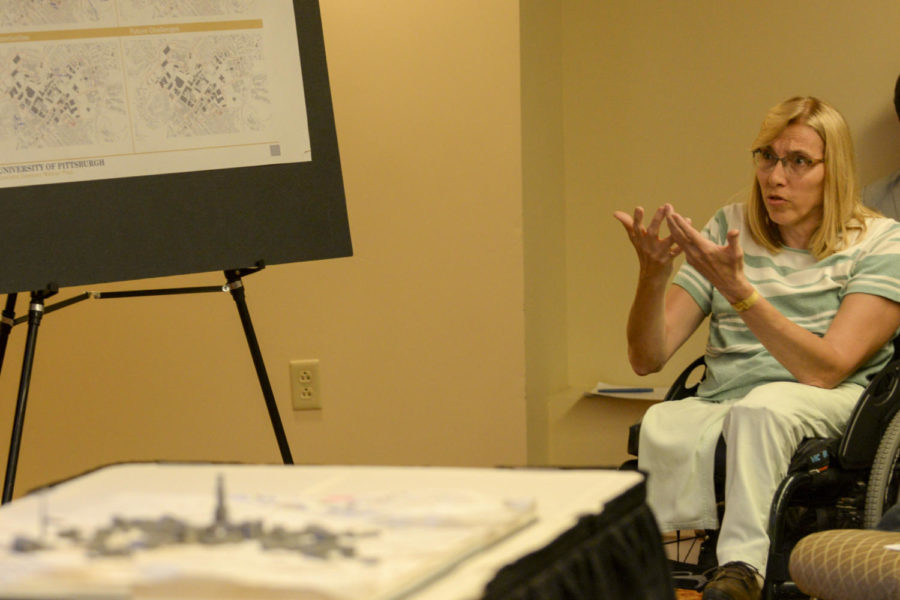Jim Wehner started his first architectural internship focused on improving Pitt’s campus 25 years ago.
Wehner, an architect specializing in institutional facilities and campus design at J-Way Architectural and father of two Pitt students, said this is Pitt’s first actual attempt to renovate the entire campus in several decades.
“[I’m] here tonight listening to conversations about the future development of the campus that first interested me so many years ago,” Wehner said.
Pitt is developing its own Campus Master Plan 2018 in collaboration with Ayers Saint Gross, an architecture firm specializing in higher education institutions. Pitt and Ayers Saint Gross held a focus group meeting last night in the University Club Conference Room A at 6 p.m. The meeting was opened up to all members of the Pittsburgh community in an effort to better understand residents’ concerns — about 40 attended.
Dana Perzynski, a senior associate at ASG, began the meeting with a presentation which provided an overview of what the firm intends to do over the next year.
“We are engaging internal and external stakeholders, we are spending time on the ground just getting a feel for campus […] This is our first time back now that it’s in session and it’s a different place,” Perzynski said during the presentation.
Those in attendance raised concerns about accessibility for the disabled and all Pittsburgh residents in general, the need for a grocery store and the limited number of student residence halls, among other issues.
Mary Fletcher, a representative of the Bellefield Area Citizens Association — a group of residents looking to improve the North Oakland neighborhood — asked several questions concerning safety and accessibility for people with disabilities following the presentation.
“[I’m] making sure accessibility issues are not overlooked in this master plan,” Fletcher said. “There are still buildings today that are not adequately, or even at all, accessible on campus.”
Marshall Goodwin — a resident of Oakland for the last 50 years — expressed concern for the amount of student living facilities and a lack of housing for other residents.
“I’m very concerned that we are losing any opportunities for faculty or anyone that works in the institutions to actually live in Oakland and be able to walk to work because the encroachment of student housing is not controlled,” Goodwin said.
Both project team members and community members who attended the meeting mentioned several times that a change in the location of Pitt’s football field could be a part of the master plan. Many believe that Heinz Field’s distance from campus deters students from attending games.
One member of the audience interjected that if students are forced to take a bus, even home games feel like away games.
Canard S. Grigsby, Pitt’s Department of Facilities Management’s project manager for planning and design, is a key figure in building the University’s vision for how the master plan will go.
“What we intend to do is in the master plan process design facilities that work into the urban fabric and then become destinations or features people can recognize similar to the Cathedral. They won’t be as iconic as the Cathedral obviously […] but have that same type of gravitas,” Grigsby said.
Another main condition for the master plan, Grigsby said, was adaptability — being able to edit the completed plan if problems arise. He compared it to being rerouted when using a GPS.
“But to create literally a GPS that when I get started on my travel if I get a detour, hit a detour, I can take that detour and the GPS can reroute me and get me back on track again once I navigate and negotiate that detour,” Grigsby said.
A focus group geared toward Pitt students will be held this Friday from 11:30 a.m. to 1 p.m. in the University Club Ballroom B. Perzynski said community input is important and ASG wants to make sure that every voice is heard.
While Wehner said it’s too early to tell whether any changes will be beneficial, he said the people behind the plan are still learning.
“As an architect, and a person with a passion for campus design, this University has a lot of history and potential that has not been tapped,” Wehner said.


